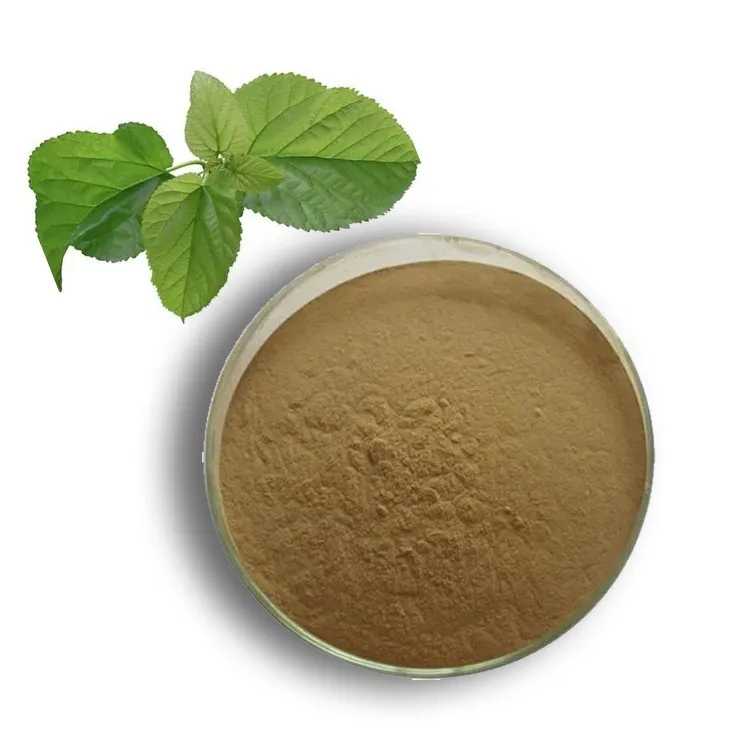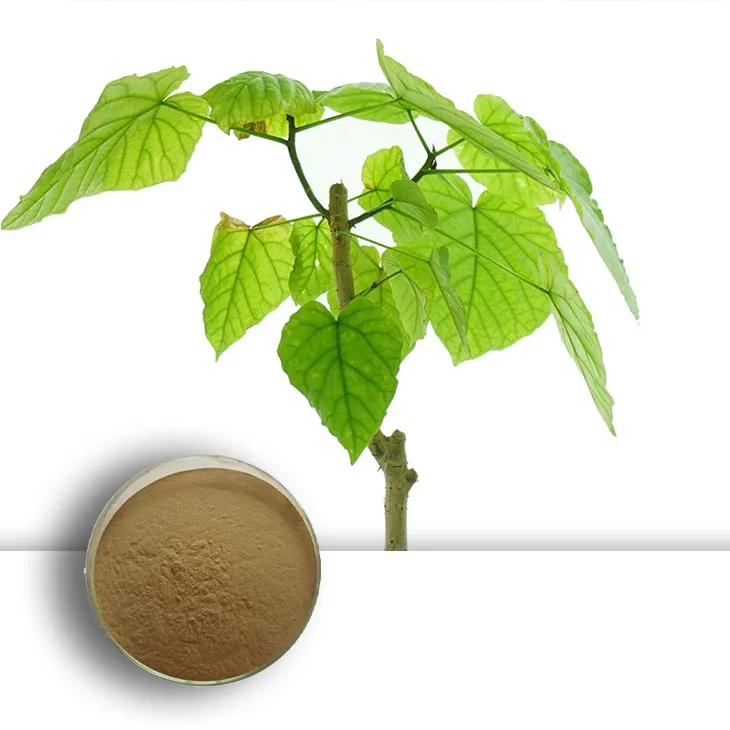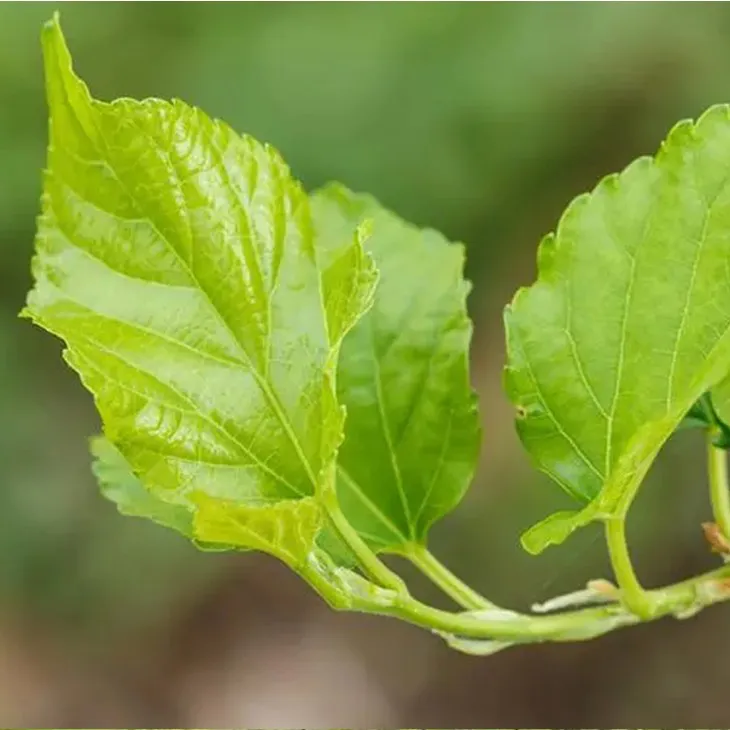- 0086-571-85302990
- sales@greenskybio.com
The flavor of mature mulberry leaves and natural mulberry leaf extracts.
2024-11-14

1. Introduction
Mulberry trees are well - known for their various uses, especially in the fields of sericulture, health, and food. Mature mulberry leaves possess a unique flavor profile, and natural Mulberry leaf Extracts are rich in bioactive compounds. This article aims to explore these aspects comprehensively.

2. The Flavor of Mature Mulberry Leaves
Mature mulberry leaves have a complex flavor that can be described in several ways.
2.1 Taste Components
- Bitterness: One of the prominent taste elements in mature mulberry leaves is bitterness. This bitterness is attributed to the presence of certain compounds such as alkaloids. However, this bitterness is not overpowering and can be an acquired taste for some. - Astringency: There is also a mild astringency in the flavor. It gives a drying sensation in the mouth, which is related to the tannin content in the leaves. - Freshness and Greenness: Alongside the bitterness and astringency, there is a distinct freshness and greenness. This aspect is reminiscent of other fresh green leafy vegetables and is likely due to the presence of volatile compounds and chlorophyll.
2.2 Factors Affecting the Flavor
- Growth Conditions: The flavor of mature mulberry leaves can be significantly influenced by their growth conditions. For example, leaves grown in well - drained soil with adequate sunlight tend to have a more pronounced and balanced flavor. If the soil lacks certain nutrients, it may affect the biosynthesis of flavor - related compounds. - Harvest Time: The time of harvest also plays a crucial role. Leaves harvested at the peak of maturity may have a different flavor compared to those harvested earlier or later. Generally, leaves harvested at the optimal maturity level exhibit a more complex and harmonious flavor.

3. Natural Mulberry leaf Extracts
Natural Mulberry leaf Extracts are obtained through various extraction methods, which concentrate the bioactive components present in the leaves.
3.1 Extraction Methods
- Solvent Extraction: One common method is solvent extraction. Organic solvents such as ethanol or methanol can be used to extract the desired compounds from the mulberry leaves. This method is effective in extracting a wide range of bioactive substances, including flavonoids and alkaloids. However, it requires careful handling of the solvents to ensure the safety and quality of the extract. - Water Extraction: Water extraction is also a popular approach. It is a more natural and environmentally friendly method. Hot water can be used to extract water - soluble compounds from the leaves. Although it may not be as efficient as solvent extraction in extracting certain lipophilic compounds, it can still yield a significant amount of beneficial substances such as polysaccharides.
3.2 Bioactive Compounds in Mulberry Leaf Extracts
- Flavonoids: Flavonoids are abundant in mulberry leaf extracts. They have antioxidant properties, which can help in protecting the body against oxidative stress. Examples of flavonoids in mulberry leaves include rutin and Quercetin. These compounds can also have anti - inflammatory effects and may play a role in preventing chronic diseases. - Alkaloids: Alkaloids, such as 1 - deoxynojirimycin (DNJ), are another important class of compounds in mulberry leaf extracts. DNJ has been shown to have potential in regulating blood sugar levels. It inhibits the activity of certain enzymes involved in carbohydrate metabolism, making it of particular interest in the field of diabetes management. - Polysaccharides: Mulberry leaf extracts also contain polysaccharides. These complex carbohydrates can have immunomodulatory effects, enhancing the body's immune function. They may also have prebiotic properties, promoting the growth of beneficial gut bacteria.

4. Applications in Health
The unique flavor and bioactive compounds in mature mulberry leaves and their extracts have led to various applications in the health field.
4.1 Diabetes Management
As mentioned earlier, the alkaloid DNJ in mulberry leaf extracts can be beneficial for diabetes management. It helps in controlling blood sugar levels by interfering with the normal breakdown of carbohydrates. Regular consumption of mulberry leaf products may assist in reducing post - meal blood glucose spikes and maintaining more stable blood sugar levels over time.
4.2 Cardiovascular Health
- The flavonoids present in mulberry leaves contribute to cardiovascular health. They can help in reducing oxidative stress in the blood vessels, which is a major risk factor for cardiovascular diseases. By scavenging free radicals, these flavonoids may prevent the oxidation of low - density lipoproteins (LDL), thereby reducing the risk of atherosclerosis. - Additionally, some studies suggest that mulberry leaf extracts may have a mild hypotensive effect, helping to lower blood pressure to a certain extent.
4.3 Immune System Enhancement
The polysaccharides in mulberry leaf extracts play a role in enhancing the immune system. They can stimulate the activity of immune cells such as macrophages and lymphocytes. This immune - boosting effect can help the body defend against various pathogens, including bacteria and viruses.
5. Applications in Food
The flavor of mature mulberry leaves and the properties of their extracts also find applications in the food industry.
5.1 Culinary Uses
- In some cuisines, mature mulberry leaves are used as an ingredient in salads or as a wrapping for other food items. Their unique flavor adds a fresh and slightly bitter note to the dishes. For example, in certain Asian cuisines, mulberry leaves are used to wrap rice or meat, imparting a distinct flavor during the cooking process. - Mulberry leaf extracts can be used as a natural flavor enhancer or a food additive. They can be added to beverages such as tea or juice to provide a unique taste and potentially enhance the health benefits of the product.
5.2 Functional Food Development
- With the increasing demand for functional foods, mulberry leaf extracts are being incorporated into various food products. For instance, they can be added to biscuits, cakes, or other baked goods to create functional snacks. These products can then be marketed as having health - promoting properties such as blood sugar regulation or antioxidant activity. - Mulberry leaf - based powders or extracts can also be used in the development of dietary supplements. These supplements can be consumed by individuals looking to supplement their diet with the beneficial compounds found in mulberry leaves.
6. Applications in Traditional Medicine
Mulberry leaves have a long history of use in traditional medicine in different cultures.
6.1 Traditional Chinese Medicine
In Traditional Chinese Medicine (TCM), mulberry leaves are often used to treat various ailments. They are believed to have a cooling effect on the body and are used in prescriptions for treating fevers, coughs, and eye problems. The bitter and astringent nature of the leaves is thought to have a detoxifying effect in TCM theory.
6.2 Ayurvedic Medicine
In Ayurvedic medicine, mulberry leaves are also used for their medicinal properties. They are used in remedies for diabetes, as well as for promoting general well - being. Ayurvedic practitioners may use mulberry leaves in the form of decoctions or powders in their treatments.
7. Conclusion
In conclusion, mature mulberry leaves have a distinct flavor that combines bitterness, astringency, and freshness. Natural mulberry leaf extracts are rich in bioactive compounds such as flavonoids, alkaloids, and polysaccharides. These leaves and their extracts have significant potential in various fields including health, food, and traditional medicine. Continued research on mulberry leaves and their extracts may lead to the development of new products and therapies in the future.
FAQ:
What is the characteristic flavor of mature mulberry leaves?
Mature mulberry leaves often have a unique, somewhat earthy and slightly bitter flavor. The bitterness can be attributed to the various compounds present in the leaves, such as alkaloids. However, this flavor can also be influenced by factors like the variety of mulberry tree, the growing environment, and the time of harvest.
How are natural mulberry leaf extracts obtained?
Natural mulberry leaf extracts are typically obtained through processes such as solvent extraction. Organic solvents like ethanol are often used to dissolve the active compounds in the mulberry leaves. Another method could be water extraction, which is more suitable for extracting water - soluble components. After extraction, the solvents are removed through evaporation or other techniques to obtain the concentrated extract.
What are the health benefits of natural mulberry leaf extracts?
Natural mulberry leaf extracts have several potential health benefits. They may help in blood sugar regulation as they contain compounds that can affect glucose metabolism. They also have antioxidant properties, which can help combat oxidative stress in the body. Some studies suggest that they may have a role in reducing cholesterol levels and improving cardiovascular health.
Are there any applications of mature mulberry leaves in the food industry?
Yes, in the food industry, mature mulberry leaves can be used in some traditional or specialty food products. For example, they can be dried and powdered to be added to teas, providing a unique flavor and potential health benefits. In some cultures, mulberry leaves are also used in the preparation of certain fermented foods or as a wrapping material for food items, imparting a subtle flavor.
How do the properties of mature mulberry leaves compare to those of their extracts?
The properties of mature mulberry leaves and their extracts are related but also have differences. The leaves contain a complex mixture of compounds in their natural state. When extracts are made, the concentration of certain active compounds may be increased. For example, the antioxidant activity may be more concentrated in the extract. However, the whole leaf also contains fiber and other components that may have different physiological effects compared to the extract.
Related literature
- The Chemical Composition and Health Benefits of Mulberry Leaves"
- "Extraction Methods and Applications of Mulberry Leaf Extracts in the Health and Food Sectors"
- "The Flavor Profile of Mulberry Leaves and Its Influence on Culinary Applications"
- ▶ Hesperidin
- ▶ citrus bioflavonoids
- ▶ plant extract
- ▶ lycopene
- ▶ Diosmin
- ▶ Grape seed extract
- ▶ Sea buckthorn Juice Powder
- ▶ Beetroot powder
- ▶ Hops Extract
- ▶ Artichoke Extract
- ▶ Reishi mushroom extract
- ▶ Astaxanthin
- ▶ Green Tea Extract
- ▶ Curcumin Extract
- ▶ Horse Chestnut Extract
- ▶ Other Problems
- ▶ Boswellia Serrata Extract
- ▶ Resveratrol Extract
- ▶ Marigold Extract
- ▶ Grape Leaf Extract
- ▶ blog3
-
Cranberry Plants and Skin - care Products.
2024-11-14
-
Grapefruit Seed Extract Powder
2024-11-14
-
Konjac Powder
2024-11-14
-
Peppermint Oil
2024-11-14
-
Moringa powder
2024-11-14
-
Resveratrol extract
2024-11-14
-
Curcumin Extract
2024-11-14
-
Bayberry Extract
2024-11-14
-
Wheat Germ Extract
2024-11-14
-
Curcuma Longa Extract/Turmeric extract
2024-11-14
-
Green Tea Extract
2024-11-14





















